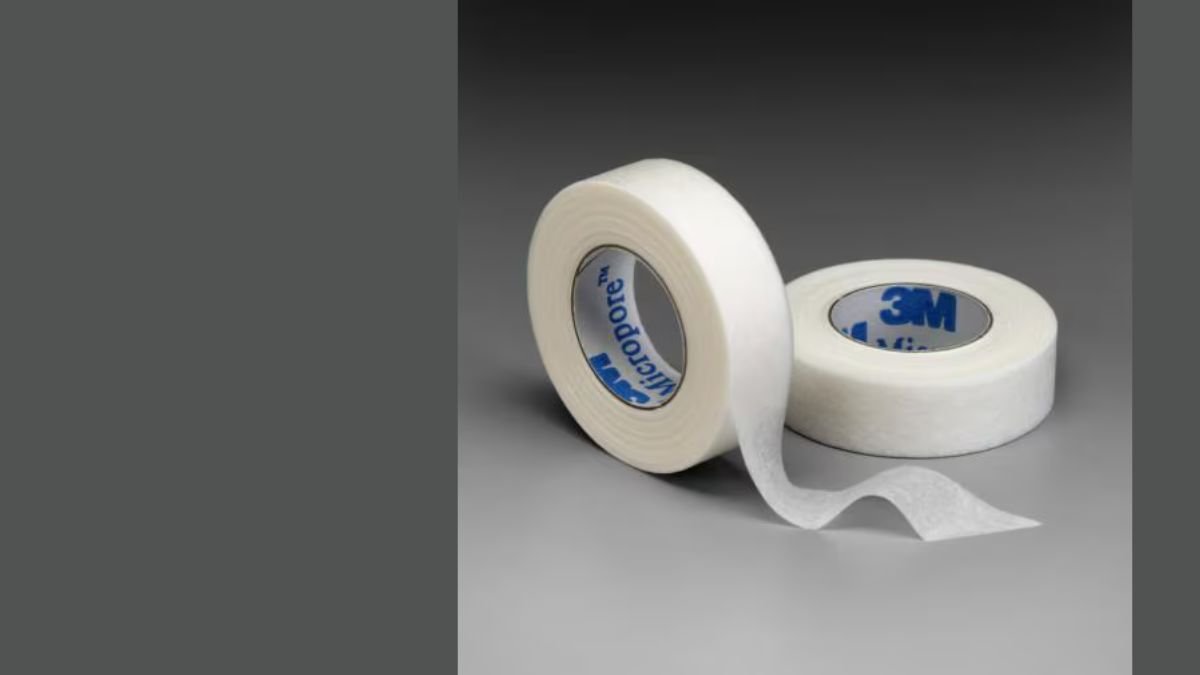Micropore tape, a specialized form of medical adhesive tape, is gaining traction across various industries due to its versatility and unique features. This lightweight, breathable tape is commonly used in healthcare, beauty, and DIY projects. Whether you’re looking for a reliable bandage for minor cuts or a way to secure delicate materials, micropore tape is often the go-to choice.
In this article, we will explore everything you need to know about micropore tape—its uses, benefits, and key differences from other adhesive products. We’ll also discuss the factors you should consider when choosing micropore tape, and we’ll include a detailed comparison chart for clarity.
What Is Micropore Tape?
Micropore tape is a type of medical adhesive tape made from a non-woven fabric that is soft, flexible, and breathable. This makes it an ideal choice for individuals with sensitive skin or wounds that need to heal properly without being disturbed by excessive moisture or irritation. Unlike some other adhesive tapes, micropore tape allows air to circulate around the wound or area it is covering, promoting faster healing and minimizing the risk of infections.
The tape is typically hypoallergenic, which makes it safe for most skin types. It’s commonly used in medical settings for securing dressings, wound care, and even for preparing patients for surgical procedures.
Key Features of Micropore Tape
Here are some key characteristics that set micropore tape apart from other types of adhesive tapes:
- Breathability: Micropore tape allows for air circulation, helping to keep the skin dry and promote natural healing.
- Gentle Adhesion: Unlike some tapes that can cause irritation or discomfort upon removal, micropore tap’e adheres securely without causing harm to the skin or leaving behind sticky residue.
- Hypoallergenic: This tape is formulated to minimize the risk of skin irritation or allergic reactions, making it suitable for sensitive skin.
- Comfortable and Flexible: Micropore tape is soft and pliable, so it conforms to the contours of your skin without restricting movement.
- Water-Resistant: While it is not waterproof, it can handle mild exposure to moisture without compromising its adhesive properties.
These features make micropore tap’e a popular choice for a variety of applications, from securing medical bandages to cosmetic treatments.
Common Uses of Micropore Tape
Micropore tape is used in multiple sectors, especially healthcare. Below are some of the most common applications:
1. Wound Care and Dressing
Micropore tape is widely used in hospitals, clinics, and at-home care for securing dressings over wounds. Its breathable nature helps keep wounds dry and free from moisture, promoting faster recovery. Whether it’s a small cut or a post-surgical incision, micropore tap’e helps reduce the risk of infection and ensures the wound stays covered.
2. Surgical Prep
Before surgery, micropore tape is used to secure sterile dressings or cover areas of the skin that will be exposed during the procedure. Its gentle adhesion ensures that the patient’s skin is not irritated during prep, and the tape can be removed easily post-surgery.
3. Sensitive Skin Care
Micropore tape’s hypoallergenic properties make it ideal for individuals with sensitive skin. Whether it’s used to secure medical dressings or post-procedure bandages, it minimizes the risk of irritation and discomfort that can arise from harsher adhesives.
4. Beauty and Cosmetic Applications
In the beauty industry, micropore tape is used for a range of purposes, including eyelash extensions, facial treatments, and securing makeup during procedures. It’s particularly useful for skin-sensitive applications such as eyebrow waxing, where the tape holds skin gently without pulling.
5. Securing IV Lines and Catheters
In medical settings, micropore tape is often used to secure intravenous (IV) lines and catheters to ensure they stay in place without causing skin damage or irritation.
6. Preventing Blisters
Athletes and individuals who experience frequent friction on the skin may use micropore tap’e to prevent blisters. It provides a comfortable and flexible layer of protection that helps reduce rubbing and irritation.
Micropore Tape vs. Regular Adhesive Tapes: A Comparison
While many types of adhesive tapes are available, micropore tape offers specific advantages that make it more suited for medical and delicate applications. Below is a comparison chart that highlights the key differences between micropore tape and regular adhesive tapes.
| Feature | Micropore Tape | Regular Adhesive Tape |
| Breathability | Highly breathable, promotes air circulation | Limited breathability, may trap moisture |
| Hypoallergenic | Hypoallergenic, safe for sensitive skin | Can cause irritation on sensitive skin |
| Adhesion Strength | Gentle, suitable for sensitive areas | Can be strong or too adhesive for sensitive skin |
| Flexibility | Soft, flexible, conforms to skin easily | May not be as flexible or comfortable |
| Water Resistance | Water-resistant, not fully waterproof | Generally water-resistant, depends on the brand |
| Removal | Easily removable without skin damage | May cause irritation upon removal |
What to Look for When Choosing Micropore Tape
When selecting micropore tap’e for a specific application, it’s important to consider the following factors:
1. Adhesive Strength
Micropore tape comes in various adhesive strengths, depending on the brand and intended use. For medical purposes, you might opt for a tape with a gentler adhesive, while for tasks like securing materials in DIY projects, a stronger adhesive might be needed.
2. Size and Width
Micropore tape is available in various widths, ranging from narrow strips for small dressings to wide rolls for larger wounds or areas of coverage. Make sure to choose the right size based on your needs.
3. Packaging and Durability
Consider the tape’s packaging. Some micropore tapes come in single rolls, while others are available in bulk or in individual sterile packages, which can be more convenient for medical settings.
4. Skin Sensitivity
If you or the person using the tape has sensitive skin, always choose a hypoallergenic option. Many brands offer micropore tap’e that’s designed to minimize irritation and discomfort.
5. Water Resistance
If you need the tape to endure exposure to water, consider a micropore tape that’s more resistant to moisture. While it’s not waterproof, some versions handle water exposure better than others.
Benefits of Using Micropore Tape
Here are some of the major benefits of incorporating micropore tap’e into your first aid, beauty, or DIY routine:
1. Improved Healing
By allowing your skin to breathe, micropore tap’e creates an ideal healing environment for wounds. The tape’s breathable design reduces the chance of moisture buildup, which can contribute to infections and delayed healing.
2. Minimized Skin Damage
One of the biggest advantages of micropore tap’e is that it is gentle on the skin. Unlike some other types of medical adhesive, it can be removed without causing discomfort or damage to the skin’s surface, which is especially important for patients with delicate or sensitive skin.
3. Comfortable Wear
Micropore tape’s flexibility and softness make it comfortable for prolonged wear, whether you’re recovering from surgery or protecting a small wound. It doesn’t cause chafing, making it perfect for areas of skin that move frequently.
4. Hypoallergenic Properties
For those with allergies or skin sensitivities, micropore tap’e offers a safer option. The tape is designed to reduce the likelihood of allergic reactions, providing peace of mind for users.
How to Use Micropore Tape Safely
- Clean the Area First: Before applying micropore tap’e, clean the skin and ensure it is dry. This ensures the tape adheres properly.
- Apply Gently: Press the tape gently onto the skin, ensuring there are no creases. This helps the tape stay in place and prevents irritation.
- Change Regularly: For medical uses, change the tape regularly to ensure the skin stays clean and free from infection.
Conclusion
Micropore tape is an essential item for both medical and everyday use. Its breathable, hypoallergenic, and flexible nature makes it ideal for wound care, beauty applications, and DIY projects. By understanding the key features, uses, and benefits of micropore tap’e, you can make an informed decision when choosing the right type for your needs.
Always ensure that you select micropore tap’e based on factors such as adhesive strength, size, and skin sensitivity. Whether you need it for medical care, beauty routines, or other uses, micropore tape provides a comfortable and safe solution that delivers both convenience and quality.











